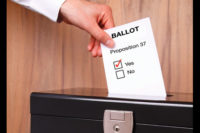On a need-to-know basis
What do you need to know and when do you need to know it? A knee-jerk response might be that you need to know everything about your plant and you need to know it in real time. But in reality, fast data collection simply for data collection's sake won't save you money or improve your efficiency.


One of the most important questions you can ask yourself is: why are we collecting this data? Is your objective to lower inventory? Achieve higher quality? Produce more accurate costing? Some of this information you can get without a data collection system. However, the system will probably improve your results and enable you to reach your goals more readily.
One purpose of data collection is to reduce errors within the plant. The Grocery Manufacturers Association (GMA) reports that 36% of all orders have errors. At minimum, this means that one line item had the wrong quantity or even the wrong product shipped. These errors happen because people misread a number, miscount, record a different number than they intended or have handwriting that others cannot understand.
Meanwhile, though, errors still equate to costs, either in time or money. If the error goes undetected, the impact and, therefore, cost can be much greater. Some inventory errors mean that an item's balance or location is wrong. In other cases, we may actually have two errors: one item's balance is overstated and another is understated. Whatever the error is, we end up making decisions based on incorrect data.
Improved accuracy equates to better decisions and, hopefully, more financially sound decisions. But accuracy isn't the only part of the equation. Better information won't mean anything if you don't receive it when you need it.
Getting accurate data in a timely fashion is good. Keep in mind, however, that the value of this data is dependent on the system that will process it. For example, if the finished goods system runs once a day, real-time data does not add any value to the information about finished goods. You might think the answer is to run the finished goods system more frequently. But the real question should be, if the system runs more frequently, will we make better decisions?
For example, a pet food manufacturer wanted real-time inventory from its plants. The objective was to improve shipping commitments to its customers. The company later discovered that the sales department was still making commitments based upon a once-a-day report. The added expense of real-time inventory and associated data collection did not create value for the company.
Collecting data costs money. Production or warehouse people who must manually record data are less productive than they are in their primary roles, making product or working with inventory. Similarly, later keying in this data (and correcting errors) can also cost time and money.
A data collection system avoids some of these labor costs but that system still costs money. A one-time investment in equipment, software and training is required. However, the investment justification is frequently not a calculation of hours saved but the overall impact of more data, higher quality data and/or more timely data.
Data collection systems need to be justified, like any business investment. But before you invest in a system, consider what you want it to do. Today, data collection can include time and attendance devices, bar code scanning, RFID and sensors (i.e. automated scales, flowmeters, etc.) Evaluate which format will offer you the best data to achieve your desired outcome. Will better data mean better decisions and therefore better business results? Remember, no one can know everything. Better to determine what knowledge you do need then to be overwhelmed by ineffective data.


One of the most important questions you can ask yourself is: why are we collecting this data? Is your objective to lower inventory? Achieve higher quality? Produce more accurate costing? Some of this information you can get without a data collection system. However, the system will probably improve your results and enable you to reach your goals more readily.
One purpose of data collection is to reduce errors within the plant. The Grocery Manufacturers Association (GMA) reports that 36% of all orders have errors. At minimum, this means that one line item had the wrong quantity or even the wrong product shipped. These errors happen because people misread a number, miscount, record a different number than they intended or have handwriting that others cannot understand.
Meanwhile, though, errors still equate to costs, either in time or money. If the error goes undetected, the impact and, therefore, cost can be much greater. Some inventory errors mean that an item's balance or location is wrong. In other cases, we may actually have two errors: one item's balance is overstated and another is understated. Whatever the error is, we end up making decisions based on incorrect data.
Improved accuracy equates to better decisions and, hopefully, more financially sound decisions. But accuracy isn't the only part of the equation. Better information won't mean anything if you don't receive it when you need it.
Getting accurate data in a timely fashion is good. Keep in mind, however, that the value of this data is dependent on the system that will process it. For example, if the finished goods system runs once a day, real-time data does not add any value to the information about finished goods. You might think the answer is to run the finished goods system more frequently. But the real question should be, if the system runs more frequently, will we make better decisions?
For example, a pet food manufacturer wanted real-time inventory from its plants. The objective was to improve shipping commitments to its customers. The company later discovered that the sales department was still making commitments based upon a once-a-day report. The added expense of real-time inventory and associated data collection did not create value for the company.
Collecting data costs money. Production or warehouse people who must manually record data are less productive than they are in their primary roles, making product or working with inventory. Similarly, later keying in this data (and correcting errors) can also cost time and money.
A data collection system avoids some of these labor costs but that system still costs money. A one-time investment in equipment, software and training is required. However, the investment justification is frequently not a calculation of hours saved but the overall impact of more data, higher quality data and/or more timely data.
Data collection systems need to be justified, like any business investment. But before you invest in a system, consider what you want it to do. Today, data collection can include time and attendance devices, bar code scanning, RFID and sensors (i.e. automated scales, flowmeters, etc.) Evaluate which format will offer you the best data to achieve your desired outcome. Will better data mean better decisions and therefore better business results? Remember, no one can know everything. Better to determine what knowledge you do need then to be overwhelmed by ineffective data.
Looking for a reprint of this article?
From high-res PDFs to custom plaques, order your copy today!







